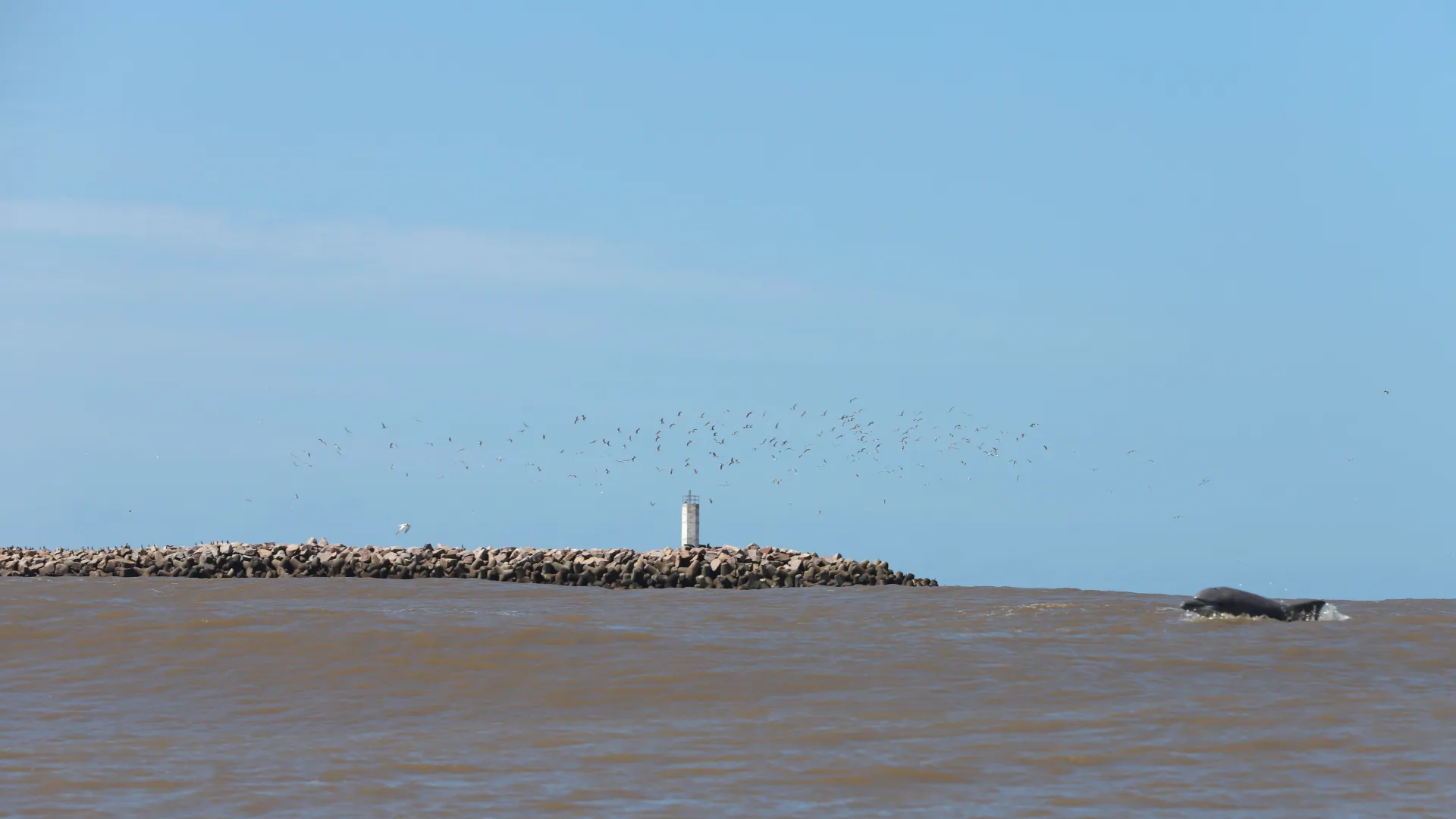News
Project investigates impacts of floods in Rio Grande do Sul on Lahille’s bottlenose dolphin and other endangered species
The historic floods that struck Rio Grande do Sul in May 2024 left a trail of destruction in cities and rural areas.

Thousands of families lost their homes, urban infrastructure was heavily affected, and economic losses surpassed billions of reais. But beyond the human and material impacts, scientists and environmentalists are also concerned about a silent drama: the effects of this climate disaster on the state’s biodiversity, especially on endangered species that depend on coastal and estuarine ecosystems for survival.
Among them is Lahille’s bottlenose dolphin (Tursiops gephyreus), a coastal dolphin found only in southern Brazil, Uruguay, and Argentina, and one of the most threatened cetaceans in the South Atlantic. This isolated population counts fewer than 600 individuals across its entire range and has long faced pressures such as pollution, habitat degradation, and bycatch in fishing nets. Now, an increasingly frequent new factor adds to this list of threats: extreme climate events.
Species under pressure: health in focus
Recent studies indicate that the dolphin population inhabiting the Patos Lagoon estuary and adjacent areas shows signs of health problems, such as accelerated biological aging and possible immune impairments. These conditions may be linked to environmental changes, the burden of accumulated organic contaminants, and even stress caused by sudden changes in their habitat.
“The health of Lahille’s bottlenose dolphin is already a matter of great concern. The floods may have worsened this condition, washing pollutants from cities, re-mobilizing contaminants deposited in the soil, increasing water turbidity, and altering prey availability,” explains biologist Pedro Fruet, a researcher at Kaosa.
The parallel with other environmental disasters is inevitable. After the Mariana dam collapse in 2015, researchers identified long-lasting impacts on aquatic fauna, including coastal dolphins in Espírito Santo, which showed changes in habitat use and potential toxic effects linked to the disaster. Now, scientists fear that something similar may be happening along the coast of Rio Grande do Sul.
Science in the field to understand the effects of floods
To assess these impacts, the Chico Mendes Institute for Biodiversity Conservation (ICMBio), through the National Research Center for Aquatic Mammal Conservation (CMA), launched in 2025 the study “Assessment of the Effects of Climate Change-related Natural Disasters on RS Biodiversity”, which will run until 2027.
The initiative brings together a wide network of partner institutions: Kaosa, the Oceanographic Museum of the Federal University of Rio Grande (FURG), the Laboratory of Ecology and Conservation of Marine Megafauna (ECOMEGA/FURG), the Marine Animal Recovery Center (CRAM/FURG), the Lagoa dos Patos Dolphins Project, the Aquatic Mammals and Bioindicators Laboratory “Izabel Gurgel” (MAQUA-UERJ), and the Environmental Education and Monitoring Center (NEMA). The project also receives support from Facto.
“Events like the 2024 floods highlight the urgency of understanding how climate change affects not only people but also ecosystems and the species that inhabit them,” says Fruet.
Three lines of action
Fieldwork takes place mainly in the municipality of Rio Grande and around the Patos Lagoon, a critical region for the conservation of Lahille’s bottlenose dolphin and other endangered species, such as the franciscana dolphin (Pontoporia blainvillei) and the South American sea lion (Otaria flavescens).
The activities are divided into three fronts:
- Health and distribution monitoring: Boats regularly survey the estuary and adjacent coast to observe dolphins, record their distribution, and collect skin and blubber samples. These materials allow analyses of organic contaminants and heavy metals, comparing data before and after the flood.
- Mortality monitoring: Teams patrol the shoreline to record strandings of marine animals and collect carcass samples. Each case helps identify possible causes of death related to the climate event and its environmental consequences.
- Fishing dynamics: The team also investigates how the flood altered artisanal and semi-industrial fishing routines. Changes in fishing effort and areas may increase the risk of interaction and accidental capture of dolphins and franciscanas.
The role of the Gephyreus Project
The Gephyreus Project, which coordinates conservation efforts for Lahille’s bottlenose dolphin across its distribution, is one of the key players in this investigation. Part of its team, based in Rio Grande, carries out two monthly boat-based monitoring surveys, conducted by members of the historic Lagoa dos Patos Dolphins Project — one of the oldest cetacean research initiatives in Brazil, with more than 50 years of activity. The population studied in detail since 1974 provides a unique opportunity for long-term monitoring, allowing more reliable assessments of human impacts on the species.
Biodiversity, communities, and the future
The floods also affected fishing communities that coexist daily with dolphins. Changes in fish availability, shifts in fish schools, and damage to fishing infrastructure have altered traditional practices, impacting both families’ livelihoods and human–dolphin interactions. For researchers, this demonstrates that the climate emergency is a socio-environmental problem, directly linking ecosystem health to people’s quality of life.
The study’s results will feed into ICMBio’s database and serve as input for public conservation policies that take into account the advance of extreme climate events. By 2027, the expectation is to build a solid picture of how floods and other natural disasters affect endangered species in southern Brazil — and from there, to create more effective strategies for their protection.
The project aims not only to produce scientific knowledge but also to shed light on the urgency of preparing the state and the country for a future in which floods, droughts, and heatwaves will be increasingly frequent. In this scenario, the survival of Lahille’s bottlenose dolphin may become one of the clearest indicators of the health of southern Brazil’s coastal and estuarine ecosystems.